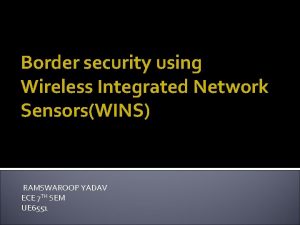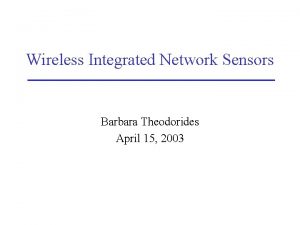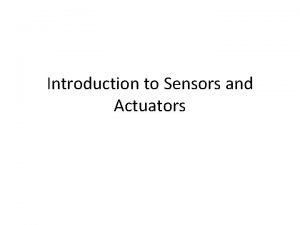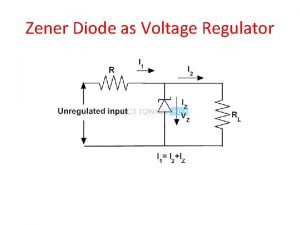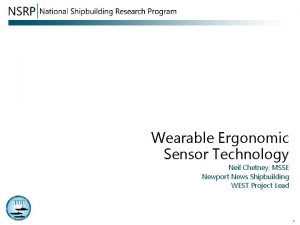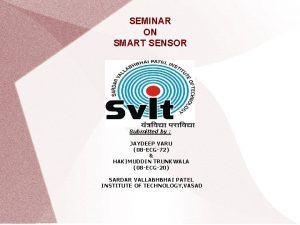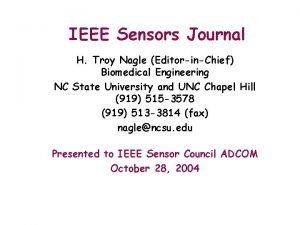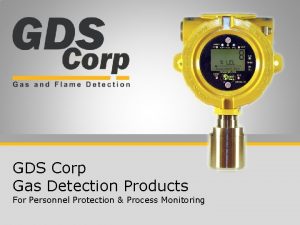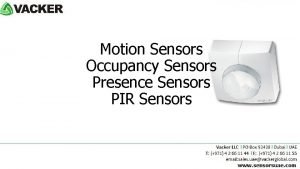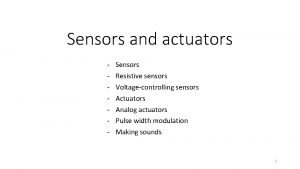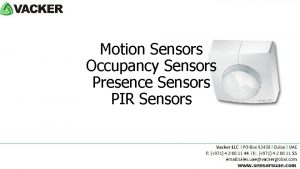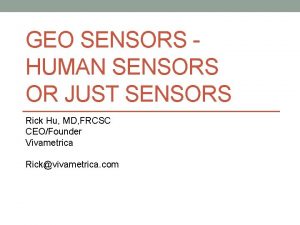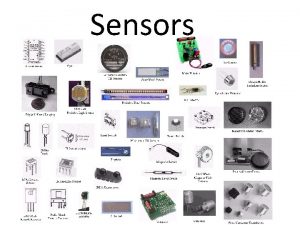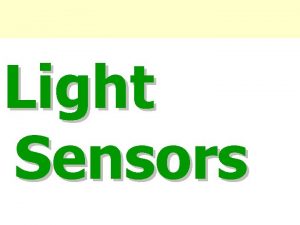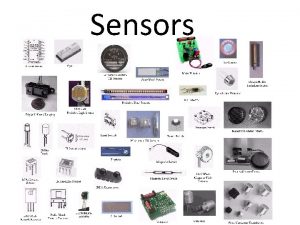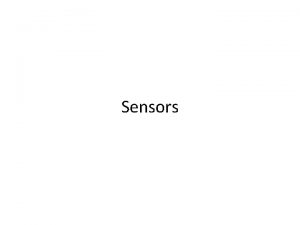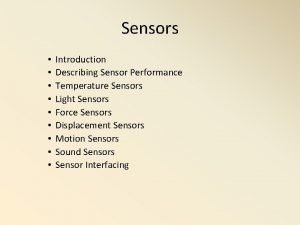WIRELESS INTEGRATED NETWORK SENSORS INTRODUCTION Wireless Integrated Network

















- Slides: 17

WIRELESS INTEGRATED NETWORK SENSORS

INTRODUCTION: Wireless Integrated Network Sensors (WINS) provide distributed network and Internet access to sensors, controls, and processors that are deeply embedded in equipment, facilities, and the environment.

v. The WINS network is a new monitoring and control capability for applications in transportation, manufacturing, health care, environmental monitoring, and safety and security. v WINS combine microsensor technology, low power signal processing, low power computation, and low power, low cost wireless networking capability in a compact system v The opportunities for WINS depend on the development of a scalable, low cost, sensor network architecture.

Ø WINS support a large number of sensors in a local area with short range and low average bit rate communication(less than 1 kbps) ØWINS Multihop Communication networks permit large power reduction and the implementation of dense node distribution.

OBJECTIVE ØWireless Integrated Network Sensors (WINS) provide a new monitoring and control capability for monitoring the borders of the country. ØUsing this concept we can easily identify a stranger or some terrorists entering the border

WINS NODES

THE WIRELESS INTEGRATED NETWORK SENSOR (WINS) ARCHITECTURE signal processing sensor interface actuator for event detection processing wireless network control continuously vigilant operation event classification interface and identification low-duty cycle operation

ØThe WINS node architecture is developed to enable continuous sensing, event detection, and event identification at low power. ØSince the event detection process must occur continuously, the sensor, data converter, data buffer, and spectrum analyzer must all operate at micro power levels

ØDISTRIBUTED NETWORK SENSOR DEVICES MUST CONTINUOUSLY MONITOR MULTIPLE SENSOR SYSTEMS, PROCESS SENSOR SIGNALS, AND ADAPT TO CHANGING ENVIRONMENTS AND USER REQUIREMENTS, WHILE COMPLETING DECISIONS ON MEASURED SIGNALS. FOR THE PARTICULAR APPLICATIONS OF MILITARY SECURITY, THE WINS SENSOR SYSTEMS MUST OPERATE AT LOW POWER, SAMPLING AT LOW FREQUENCY AND WITH ENVIRONMENTAL BACKGROUND LIMITED SENSITIVITY.

WINS MICRO SENSORS : ØSource signals like seismic, infrared, acoustic and others decay in amplitude rapidly with radial distance from the source. ØThe sensor-substrate “Sensorstrate” is then a platform for support of interface, signal processing, and communication circuits.

DIFFERENT TYPES OF SENSORS

Wins infrared thermal detector:

ØThermal detector just captures the harmonic signals produced by the foot-steps of the stranger entering the border. Ø These signals are then converted into their PSD values and are then compared with the reference values set by the user.

WINS DIGTAL SIGNAL PROCESSING Ø If a stranger enters the border, his foot-steps will generate harmonic signals. Ø It can be detected as a characteristic feature in a signal power spectrum ØThe spectrum analyzer resolves the WINS input data into a low-resolution power spectrum.

WINS micro power spectrum analyzer architecture

APPLICATIONS: Ø Support large numbers of sensor. ØDense Sensor Distributions. ØThese sensors are also developed to support short distance RF communication. ØInternet access to sensors, controls and Processor. ØUsed in Industry, Transportation and security.

 Border security using wins
Border security using wins Wireless integrated network sensors
Wireless integrated network sensors Sensors and actuators introduction
Sensors and actuators introduction Introduction to sensors ppt
Introduction to sensors ppt Arduino basics ppt
Arduino basics ppt Telecommunications, the internet, and wireless technology
Telecommunications, the internet, and wireless technology Integrated wireless technologies
Integrated wireless technologies Zener diode as voltage regulator
Zener diode as voltage regulator Wearable inertial sensors
Wearable inertial sensors Wearable ergonomic sensors
Wearable ergonomic sensors Smart washroom system
Smart washroom system Conclusion of smart sensors
Conclusion of smart sensors Monitor oil debris
Monitor oil debris Sensors vs intuitives
Sensors vs intuitives Table driven agent in ai
Table driven agent in ai Density of sea water
Density of sea water Ieee sensors journal impact factor
Ieee sensors journal impact factor Gds corp
Gds corp
